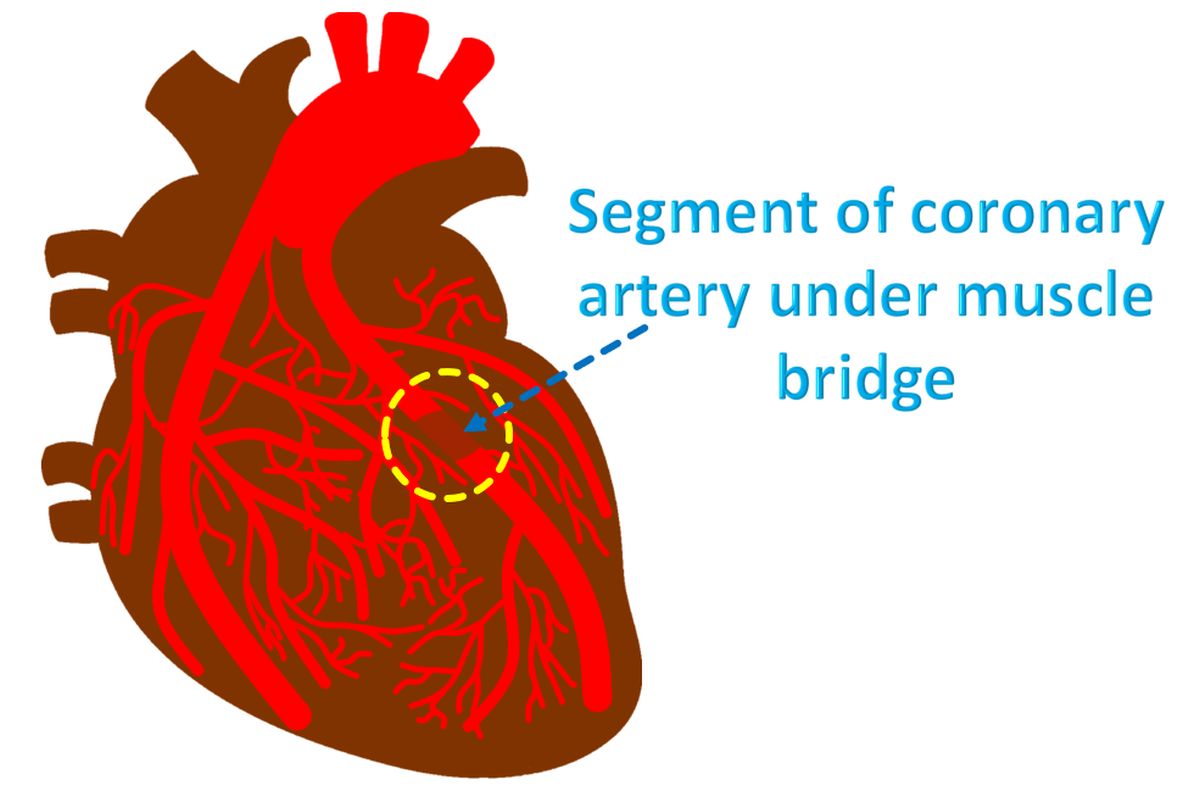What is a myocardial bridge?
Normally the coronary arteries are located outside the myocardium. Coronary arteries are the blood vessels supplying oxygenated blood to the heart. Myocardium means heart muscle. Occasionally a segment of the coronary artery passes through the myocardium. This causes a narrowing of that region when the heart muscle contracts and is known as myocardial bridging. Myocardial bridging can be recognized as narrowing of a region of the coronary artery when the heart muscle contracts and normalizes when the heart muscle relaxes after a contraction.

Usually myocardial bridges do not cause a decrease in blood supply to the heart muscle as normally the blood flow into the muscle can occur only when the heart muscle relaxes. Still myocardial bridges can rarely cause a decrease in the blood flow to the heart and cause chest pain. Rarely this may need recurrent hospital admissions. Very occasionally a heart attack or life threatening heart rhythm abnormalities may occur. The risk is more in those with long myocardial bridge associated with automatic contractions of the vessel wall known as coronary vasospasm.

Longer and thicker myocardial bridges may be associated with the usual type of partial blocks in the blood vessels of the heart. The blocks are noted in locations preceding the region of the myocardial bridge. These partial blocks can become complete blocks later and cause a heart attack. In this situation the block occurs in a larger portion of the coronary artery with higher significance.



